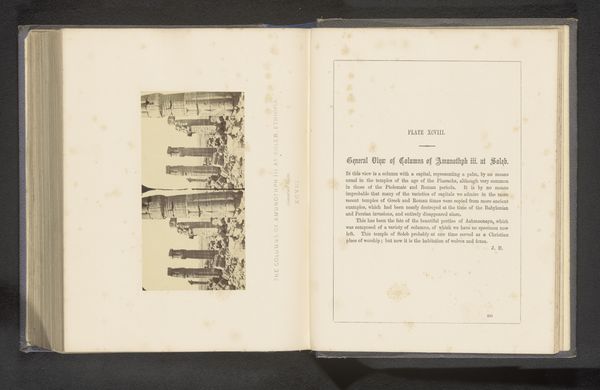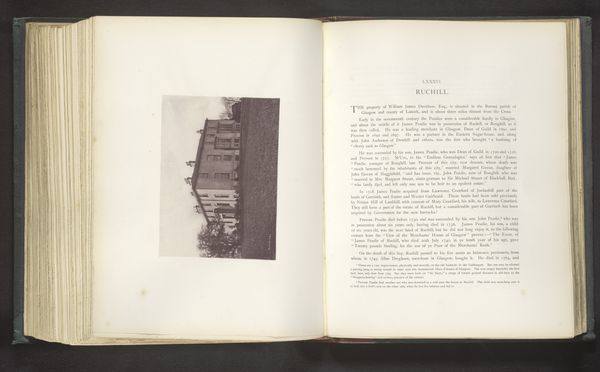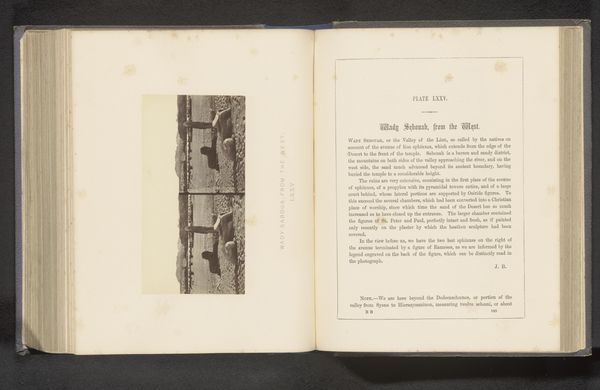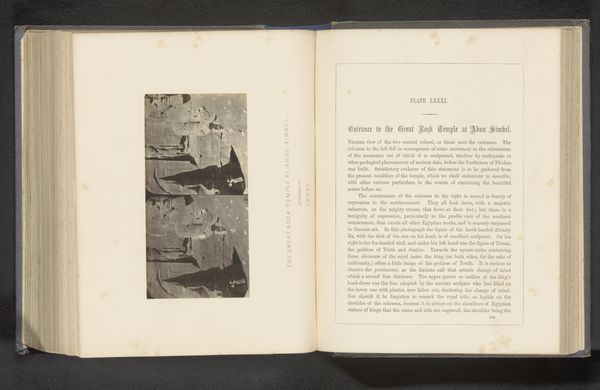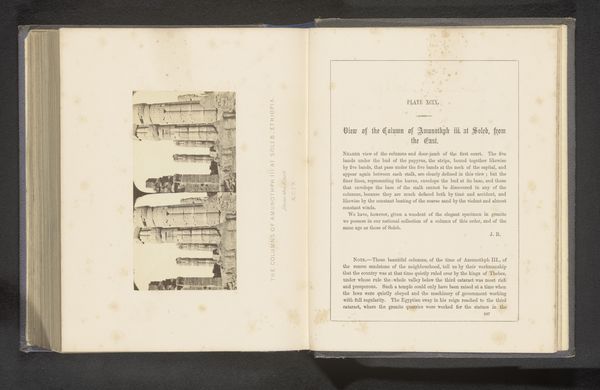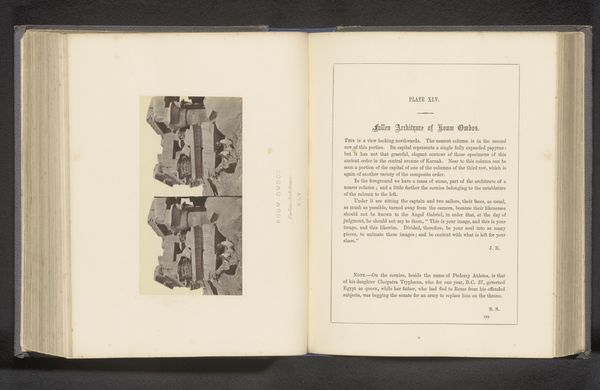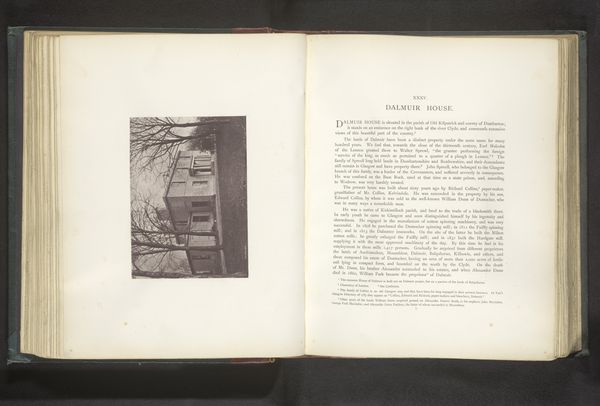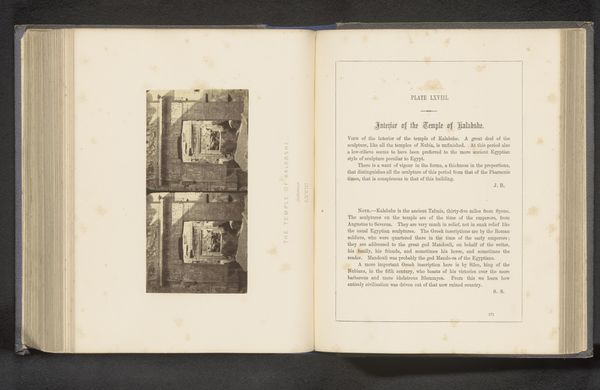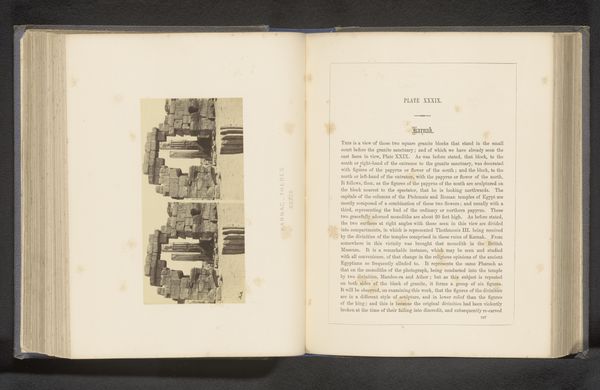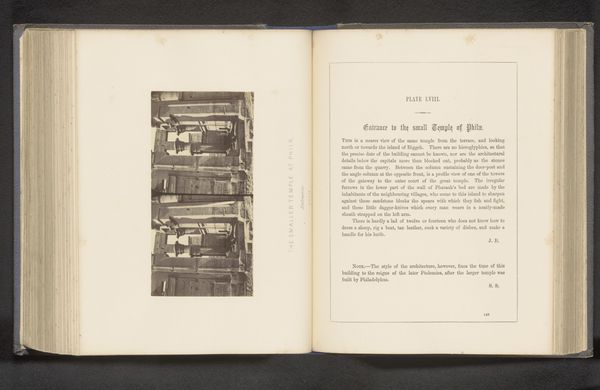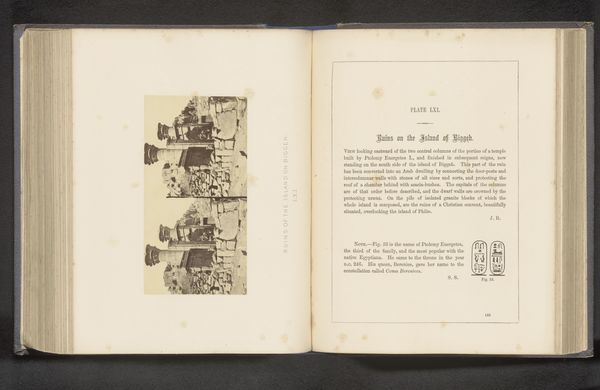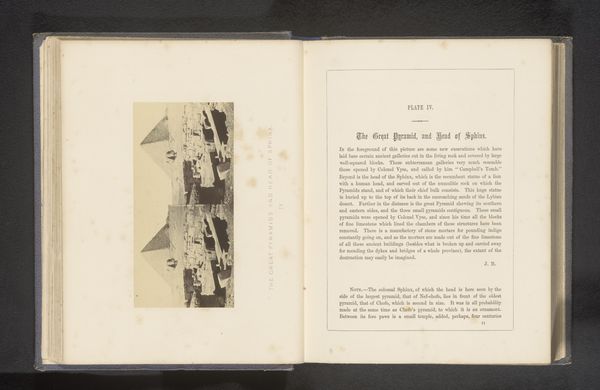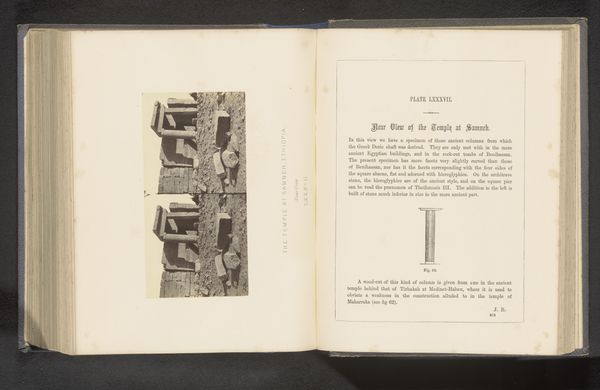
print, photography, gelatin-silver-print, albumen-print
# print
#
landscape
#
ancient-egyptian-art
#
photography
#
ancient-mediterranean
#
gelatin-silver-print
#
cityscape
#
albumen-print
Dimensions: height 74 mm, width 144 mm
Copyright: Rijks Museum: Open Domain
Curator: Oh, look at this intriguing spread. It's a page from an album showcasing a work called "Steengroeve," or "Stone Quarry" in English, by Francis Frith. It seems to have been captured before 1862, a gelatin-silver print now held at the Rijksmuseum. Editor: My immediate reaction is one of stillness and ancient power. The photograph presents these towering sandstone quarries as something almost monumental, sacred, you know? Like the landscape itself is a living record. Curator: Yes, I can see that. Frith’s landscapes often had this way of romanticizing a location through photography. The high contrast between the bright surfaces of the cut stone and the deep shadows in the cavities almost creates a stage, doesn’t it? One imagines ancient laborers, architects… their ghosts imprinted within this stone. Editor: Exactly. And the interesting framing—almost like a diptych—draws attention to the industrial processes, to how these quarries were essentially sites of extraction, fundamental to ancient Egyptian infrastructure, the very foundations of their society. The building of pyramids wasn’t this romantic feat—it relied upon labor, resource depletion... the artist gives it to us devoid of any human presence, emphasizing this sense of the ancient past looming above our contemporary viewpoint. Curator: Indeed. I always find it incredible how the black and white medium in older photography transforms landscapes into these abstract geometric plays of light and dark. It strips away any sentimentality or romantic ideals and just emphasizes this fundamental form—revealing textures and patterns that might have been missed when the world was still in vibrant colour. It also focuses the eye on the artistry inherent in even an industrial site, wouldn’t you agree? Editor: To see this now through the lens of climate crisis adds another layer. We witness, preserved on this aged page, a landscape irrevocably transformed. There is both awe for the ancient engineering, and critique. A critical perspective on how the extraction from the Earth is connected with progress, or with violence, even. Curator: Yes. There's such resonance in seeing that. Frith may not have been making an activist statement, but we can't help but interpret these images through our contemporary lens. Editor: Precisely. It's where the conversation begins, after all, where past intersects with present to enlighten a way forward.
Comments
No comments
Be the first to comment and join the conversation on the ultimate creative platform.
